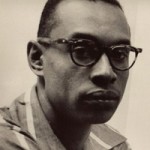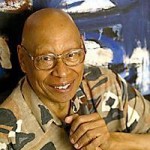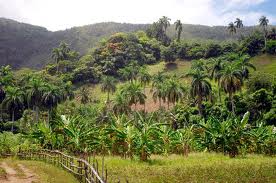This year marks the eighth anniversary of the death of Cuban painter and engraver Guido Llinás, the July 4, 2005, at Mondor hospital in Creteil, outside Paris. He died from complications following an accident on June 2, which had been hit by a motorcycle while crossing the street.
Llinás had been one of the founders of the group the eleven, which, in the early 50s, introduced in Cuban art abstract expressionism. The group only reached number onces that gave his first title in samples and, eventually, the initial group was reduced to five plastic, four painters and a sculptor: Llinás (1923-2005), Hugo Consuegra (1929-2003), Raul Martinez (1927-1995), Antonio Vidal (1928 -) and Thomas Oliva (1930-1996). These visual artists united repudiating the so-called School of Havana (Mariano, Portocarrero, when, etc.) And its baroque-figurative, a common rejection of the coup of Fulgencio Batista on March 10, 1952, and a commitment to abstract painting practiced in New York.
Guido Llinás was born in Pinar del Rio, studied music, thanks to his height he played basketball briefly passed by the School of Plastic Arts of Pinar del Rio and graduated from teacher education at the University of Havana in 1953. Twice studied printmaking in Paris in 1959 and several screen printing techniques with William Hayter in 1959-61. In 1963, he left Cuba for good:
“I told my brother that I had to get to the island, but I was going to put in an embassy and that it was going to hurt him, he was minister of the revolutionary government. In 63 my brother got me out under the guise of a scholarship to continue my studies in Paris. arrived and stayed. Shortly after the triumph of the revolution in 1959 I realized that things were going wrong. Mi-political formation in Havana the years 50 – an anarchist. I made friends with some libertarians habaneros and these gave me to read Bakunin, Berkman and Goldman, as well as Marxists like Rosa Luxembourg. Such readings affected me much. Fidel arrived and I realized that underdevelopment could not socialize and without laws and a legislature, the best forward revolutionary end in dictatorship, and it was. This was the same criticism that made Lenin Luxembourg in 1905 and gave the nail polish. ”
In his 42-year exile, Llinás produce extraordinary paintings in oil, watercolor and ink, and engraving. The unity in all this work is in “liberating gesture” that runs.
Between 1953 and 1957, U.S. Llinás visited every summer (due to holidays in master) and that was when he saw modern painting directly:
“I visited Washington, Philadelphia and Boston, I learned the Museum of Modern Art and the Metropolitan and all the best galleries. First saw the original Picasso, Miró, Gauguin, the Impressionists, etc.”. To Llinás, meeting abstract expressionism was decisive. This style-or rather, styles, was developed in New York in the late ’40s and early ’50s. Aesthetics and stylistically abstract expressionism synthesized the Surrealist automatism, the expressionist gesture and monumental scale of Mexican muralism.
This “liberating gesture”, first broke pictorially with the intimate baroque figurative (and repetitive in its worst moments) of the previous generation of Mariano, Portocarrero and Cundo, and on the other, raised a political critique of the state of the nation Cuba under Batista, this abstraction, by iconoclastic and improvisatory, reality-challenged. As Meyer Schapiro wrote in 1957, to oppose the general trends of life at the time, abstract art proclaimed his humanity and political independence: “In many ways, the painting and sculpture of today seems to be opposite to the general trends life. In opposing these arts declare their humanity and their importance. We should note that the paintings and sculptures are the latest handmade objects and personal in our culture. Almost everything else is produced industrially, mass, and after a high division of labor. ”
From his exile in 1963, this essence in the work of Llinás deepened and expanded. No faltered, not carried away by the latest fashion, was true to his “liberating gesture”, risking in each box and avoiding repetition mannered. In his last letter, he wrote:
“Exile haunts us, Hatuey was an exile, Máximo Gómez, Maceo parents and Martí. In 63 I got to Prague on a Cubana with Lam and Bertina Acevedo. Then Paris. Encuero and I left with hands on pockets, and I could not risk not remove or a drawing. had to start to “invent” new “.
And so he did, reinventing, staining and canvas and paper scribbling, tearing planks with liberating gesture, until the day that a motorcycle ended his life.
Sources: CubaEncuentro/AlejandroAnreus/InternetPhotos/www.thecubanhistory.com
Guido Llinás, painter and engraver
The Cuban History, Arnoldo Varona, Editor
Guido Llinás, pintor y grabador.
Este año se cumplirán ocho años de la muerte del pintor y grabador cubano Guido Llinás, el 4 de julio de 2005, en el hospital Mondor en Creteíl, en las afueras de París. Murió por complicaciones tras un accidente ocurrido el 2 de junio, en el que había sido atropellado por una motocicleta al cruzar la calle.
Llinás había sido uno de los fundadores del grupo Los once, los cuales, a principios de los años 50, introdujeron en el arte cubano el expresionismo abstracto. El grupo Los onces sólo alcanzó el número que le daba título en sus primeras muestras y, eventualmente, el grupo inicial se redujo a cinco plásticos; cuatro pintores y un escultor: Llinás (1923-2005), Hugo Consuegra (1929-2003), Raúl Martínez (1927-1995), Antonio Vidal (1928 – ) y Tomás Oliva (1930-1996). A estos artistas visuales los unía el repudio a la llamada Escuela de La Habana (Mariano, Portocarrero, Cundo, etc.) y su estilo barroco-figurativo; un rechazo común al golpe de Estado de Fulgencio Batista el 10 de marzo de 1952, y un compromiso con la pintura abstracta practicada en Nueva York.
Guido Llinás nació en Pinar del Rió, estudió música, gracias a su estatura jugó baloncesto, pasó brevemente por la Escuela de Artes Plásticas de Pinar del Rió y se graduó de maestro en pedagogía de la Universidad de La Habana en 1953. En dos ocasiones estudió grabado en París: serigrafía en 1959 y varias técnicas con William Hayter en 1959-61. En 1963, abandonó Cuba definitivamente:
“Yo le dije a mi hermano que me tenía que sacar de la isla, sino me iba a meter en una embajada y eso lo iba a perjudicar a él, pues era ministro del gobierno revolucionario. En el año 63 mi hermano me consiguió la salida bajo el pretexto de una beca, de continuar mis estudios en París. Llegué y me quedé. Poco después del triunfo de la revolución en 1959 yo me di cuenta que las cosas iban a salir mal. Mi formación política –en La Habana de los años 50– es anarquista. Yo me hice amigo de unos libertarios habaneros y estos me dieron a leer a Bakunin, a Berkman y Goldman, y también a marxistas como Rosa Luxemburgo. Esas lecturas me afectaron mucho. Llegó Fidel y me di cuenta que el subdesarrollo no se podía socializar y que sin leyes y un cuerpo legislativo, las mejores ansias revolucionarias terminarían en dictadura, y así fue. Esta fue la misma critica que le hizo Luxemburgo a Lenin en 1905 y la polaca le dio al clavo”.
En su exilio de 42 años, Llinás produciría una extraordinaria obra pictórica en óleo, acuarela y tinta, y en grabado. La unidad en toda esta obra se encuentra en “el gesto liberador” que la recorre.
Entre 1953 y 1957, Llinás visitó Estados Unidos cada verano (debido a sus vacaciones de maestro) y fue entonces cuando pudo ver directamente pintura moderna:
Visité Washington, Filadelfia y Boston, me aprendí el Museo de Arte Moderno y el Metropolitan y todas las mejores galerías. Veía por primera vez los originales de Picasso, Miró, Gauguin, los impresionistas, etc.
Para Llinás, el encuentro con el expresionismo abstracto fue decisivo. Este estilo –o mejor dicho, estilos– se desarrolló en Nueva York a finales de los años 40 y principios de los 50. Estética y estilísticamente el expresionismo abstracto sintetizaba el automatismo surrealista, el gesto expresionista y la escala monumental del muralismo mexicano.
Este “gesto liberador”, por un lado rompía pictóricamente con el intimismo barroco-figurativo (y repetitivo en sus peores momentos) de la generación previa de Mariano, Portocarrero y Cundo, y, por otro, planteaba una crítica al estado político de la nación cubana bajo Batista –esta abstracción, por iconoclasta e improvisatoria, cuestionaba la realidad–. Como escribió Meyer Schapiro en 1957, al oponerse a las tendencias generales de la vida en su momento, el arte abstracto proclamaba su humanidad e independencia política: “En muchos aspectos, la pintura y la escultura de hoy parece estar opuesta a las tendencias generales de la vida. En su oposición estas artes declaran su humanidad y su importancia. Debemos observar que las pinturas y las esculturas son los últimos objetos hechos a mano y personales dentro de nuestra cultura. Casi todo lo demás es producido industrialmente, en masa, y tras una alta división de la labor”.
A partir de su exilio en 1963, esta esencia en la obra de Llinás se profundizó y expandió. No claudicó, no se dejó llevar por la última moda, fue fiel a su “gesto liberador”, arriesgándose en cada cuadro y evitando la repetición amanerada. En su última carta, me escribió:
“El exilio nos persigue, Hatuey fue un exiliado, Máximo Gómez, los padres de Maceo y de Martí. En el 63 llegué a Praga en un avión de Cubana con Lam y Bertina Acevedo. Después, París. Salí encuero y con las manos en los bolsillos, no podía arriesgarme y no saqué ni un dibujito. Tuve que empezar a “inventar” de nuevo”.
Y eso hizo, inventar de nuevo, manchando y garabateando telas y papeles, arrancando planchas de madera con su gesto liberador, hasta el día que una motocicleta terminó con su vida.
Sources: CubaEncuentro/AlejandroAnreus/InternetPhotos/www.thecubanhistory.com
Guido Llinás, painter and engraver
The Cuban History, Arnoldo Varona, Editor



 Guido Llinás, painter and engraver * Guido Llinás, pintor y grabador.
Guido Llinás, painter and engraver * Guido Llinás, pintor y grabador.


